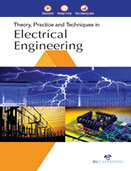Engineering and Technology

Our life would be unthinkable without the use of electrical energy. The growing utilization of the electrical engineering is a decisive prerequisite for a rapid development of world. Electrical engineering deals with the study and application of electricity, electronics, and electromagnetism. After commercialization of the electric telegraph, the telephone, and electric power distribution and use, this field then became an identifiable occupation in the latter half of the 19th century. It now covers a wide range of sub-disciplines including electronics, digital computers, power engineering, telecommunications, control systems, RF engineering, and signal processing. Electrical engineering affects a broad array of manufacturing systems, machines, communications networks, and transportation vehicles. It is hard to think of a machine or appliance without a microchip in it somewhere. With increasing industrialization, a growing proportion of electrical energy is used for the lighting of shops, offices, dwellings and for outdoor lighting. Man is relieved from heavy physical labor by the use of electrical devices. The drive of machines, hoisting gear and lifts is enabled in a simple form by the electromotor which in railway transport also has the advantage over internal combustion engines. There are many buildings where an air-conditioning system including heating, cooling and ventilation is installed for the operation of which electrical energy is required. At higher ambient temperatures, foodstuffs can only be kept for a prolonged period of time in refrigerators or cold-storage rooms which usually are also operated with electrical energy. Without electrical energy, there would be no broadcasting and television systems, no telephone communication or telegraphy. In order to arrange automatic sequences of operation in production, devices of control and regulation engineering are required which, today, are driven almost exclusively by electrical energy. All engineering disciplines advance new technology, but for the past couple of decades, no discipline has been moving faster than electrical/electronic engineering. This trend will persist for at least the next decade. Computers and semiconductors are continuing to evolve and the technology for both of these refuses to “settle down” into something predictable and well defined.
“Theory, Practice and Techniques in Electrical Engineering” covers the basic measurement techniques, instruments, and methods used in everyday practice. It includes field theory and advanced computational electromagnetics; electrical machines and transformers; optimization and interactive design; electromagnetics in materials; coupled field and electromagnetic field. The book gives a comprehensive coverage of the subject, with numerous illustrations for easy understanding.